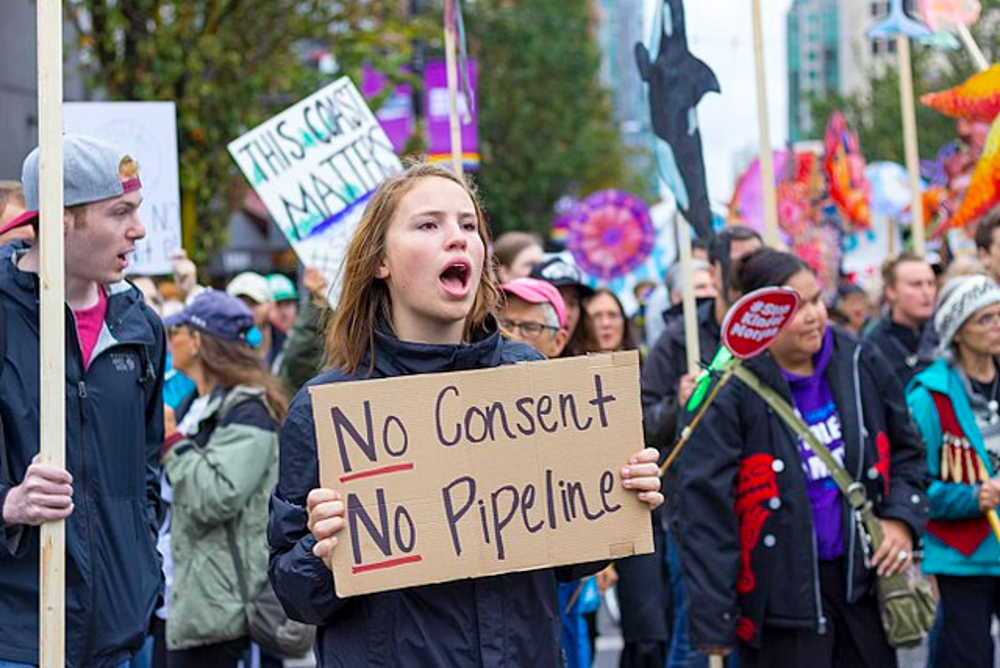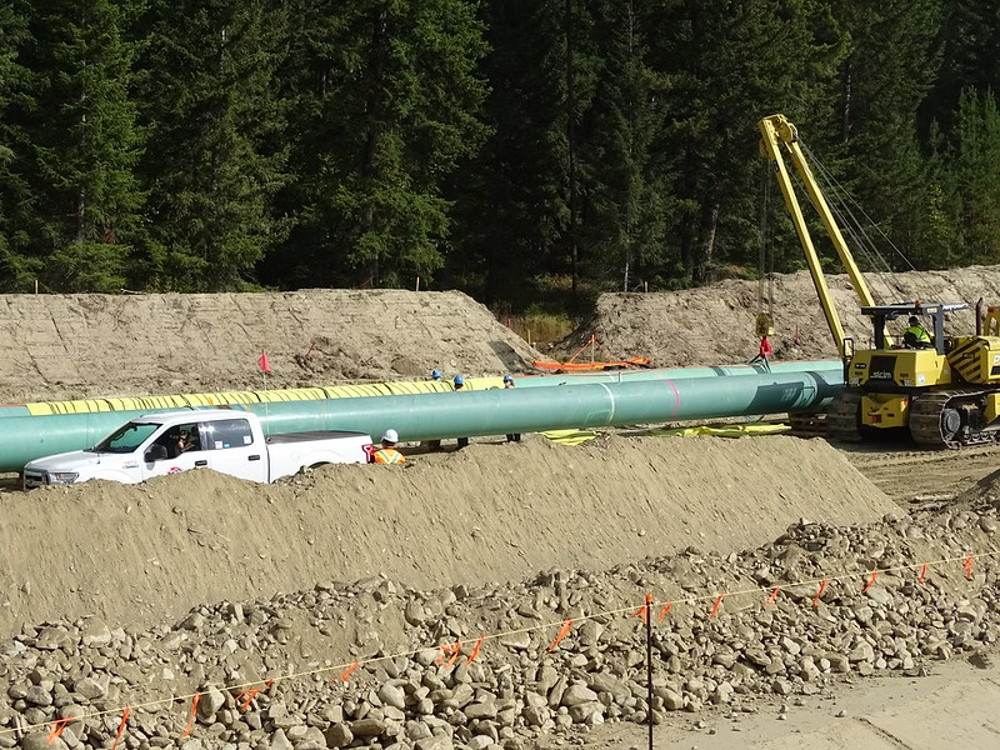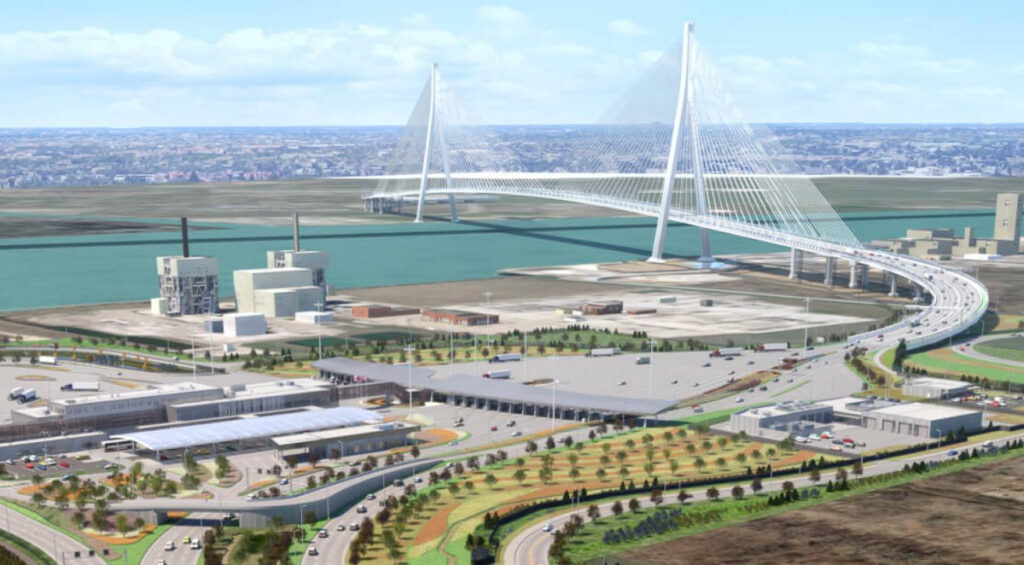
Sign up for daily news updates from CleanTechnica on email. Or follow us on Google News!
Last Updated on: 23rd February 2025, 02:03 am
Canada is furious with the unstable genius in the White House for suggesting it should become America’s 51st US state. Adding insult to injury, the aged Orange Moron has proposed slapping a 25 percent tariff on everything the US imports from Canada. That’s a lot of stuff. Canada has a huge automotive sector that is deeply integrated into the US auto industry. The Gordie Howe International Bridge between Detroit, Michigan, and Windsor, Ontario, is a vital part of that industry as trucks carrying vehicle components shuttle back and forth across the border 24 hours a day. In addition, lots of Canadian wood products, filthy crude oil from Alberta, and electricity find their way south into the US.
As Lloyd Alter pointed out so eloquently in a recent Substack post, Canada needs to develop new trading partners so it can be less economically dependent on the US. That’s an excellent idea, but it could lead to unfortunate consequences for the environment. The Trudeau government is responding by funding two major oil pipelines that will transport the nation’s petroleum products to ports where they can be transshipped to overseas customers. One goes east and one goes west, but both fly over the Big Oil cuckoo’s nest. It is unlikely that is the result Lloyd Alter had in mind.
Trans Mountain Expansion Is Back In The News

Readers may recall that in 2018, the Canadian government purchased the Trans Mountain Expansion pipeline for $34 billion (CND). That pipeline is designed to transport the crud pumped from the Alberta tar sands (it has to be dilutes first to get it to flow) across the Rocky Mountains to ports on the west coast. At the time, many questioned why the government would want to take on a project that the private sector could not make profitable. Perhaps an analogy can be drawn to the interstate highway system in the US, which provides an avenue for commerce across the entire nation. Nevertheless, Canadian taxpayers paid for it and now they are being saddled with even more debt — an additional $20 billion (CDN) — to support the Trans Mountain Expansion (TMX) pipeline.
According to Canadian environmental advocacy organization Environmental Defence, this raises the Canadian government’s total financial commitment to the pipeline to $50 billion, which has drawn sharp criticism from environmentalists and economists. “At a time when Canada should be accelerating its clean energy transition, providing $20 billion in public financing for the TMX pipeline is a step in the wrong direction,” Laura Cameron, a policy advisor with the International Institute for Sustainable Development who specializes in fossil fuel subsidies, told DeSmog in an email. She said the TMX loan places more long-term financial risk on taxpayers and further subsidizes a profitable industry amid an affordability crisis.
Why Is Canada Doing This Now?
The new loan comes after threats of a trade war between the US and Canada led to calls for Canada to be less economically dependent on trade with the United States. “[The loan is] a violation of the federal government’s promise not to provide further public money to the project,” Julia Levin, associate director of National Climate with Environmental Defence, said. She added that this brings the total amount of the Canadian government’s financial support to the oil and gas industry last year to $28.5 billion. “This newest massive loan will only benefit CEOs from the oil and banking industry, while Canadians already struggling with an affordability crisis will be left on the hook to cover the costs,” she said.
Research conducted by IISD reveals that, despite Canada’s frequent pledges to end fossil fuel subsidies, the country continues funneling tens of billions of taxpayer dollars into the pockets of hugely profitable oil and gas companies, hugely stupid waste of public money. “A recent IISD report found that TMX is operating at a loss and will only recover the full investment if government acts to make oil companies pay the full cost,” Cameron said. Instead of supporting the oil industry, “shifting public financing to support industries with long-term growth trajectories will bolster domestic economic security, create good stable jobs, and reduce our reliance on volatile fossil fuels.”
An analysis by DeSmog reveals that TMX may never have been financially viable in the first place. The project was nearly abandoned by Kinder Morgan, its original developer, in 2018. Despite that, the Trudeau government capitulated to pressure from the fossil fuel sector and their lobbyists, who argued that the nation’s insufficient pipeline infrastructure made Canada overly reliant on the United States. In addition, anticipated Asian demand for fossil fuels from Canada never materialized and the pipeline has been operating at a loss since its launch in May 2024.
TMX is now the most expensive infrastructure project in Canadian history, estimated to cost 40 times more than investments in renewable energy between 2014 and 2020. Experts say it is unlikely to recoup its costs, let alone turn a profit, because the government charges tolls amounting to less than half of what’s required to pay the pipeline’s capital costs. “Oil industry CEOs and their political supporters have been quick to exploit the current uncertainty sparked by President Trump’s tariff threat by insisting the answer is more oil and gas pipelines,” Environmental Defence’s Levin said in a statement. “Let TMX be a warning. It’s taxpayers who end up paying the price, as multinational, foreign owned companies reap the rewards. More fossil fuel infrastructure is not a winning strategy for Canadians or the planet.”
Keith Stewart, senior energy strategist with Greenpeace Canada, thinks it’s possible that tariff threats from the Trump administration may lead to more Canadian oil flowing toward Asian markets. But he thinks the oil companies should pay for pipelines, not taxpayers. “This is a very old playbook, where the oil industry is looking to take advantage of a crisis to brush aside environmental and health protections. [Fossil fuel leaders] backed Trump’s campaign for President with mega-donations, and now they want to bring Trump-style environmental rules here. But we should no more accept this than we do his demand that Canada become the 51st state. Doubling down on oil now, as the world is switching to electric vehicles and heat pumps, would be like buying a Blockbuster franchise as Netflix is taking off,” he said.
Julia Levin agrees the oil industry and its political supporters often try to profit from global crises. “We’ve seen it before, for example, in response to the crisis in Ukraine. The response from the fossil fuel industry is always the same — do away with regulations, build more pipelines, remove limits to pollution, and scrap environmental assessments. Of course, none of those things would actually help with the current situation.” Conservative Party leader Pierre Poilievre also promises to deregulate the fossil fuel industry if he becomes Prime Minister. “He has said he will kill the oil and gas pollution cap, the clean electricity regulation, the low carbon fuel rule, and the Impact Assessment Act while building pipelines in all directions,” Stewart noted.
Energy East Pipeline May Be Resurrected

Speaking of all directions, a proposed Energy East pipeline from Alberta to St. John, New Brunswick, that has been dormant for years is suddenly back on the table as a result of Canada’s newfound interest in decoupling its economy from its reliance on America. DeSmog suggests that most Canadians agree Canada needs to take Trump’s threats seriously but that doesn’t mean the country should write another blank check for an oil industry mega-project that may take a decade to complete. The Canadian government is contemplating contributing another $15 billion to get the Energy East project restarted.
The Financial Times recently reported that crude oil imports into China declined by 2 percent in January. It said, “Some may disagree on the exact moment when China’s appetite for oil peaks, but the IEA … says long term demand is only going in one direction and producers and oil-exporting countries need to be prepared.” The Globe and Mail recently made the argument that “the economic case for new or revitalized pipelines is simply non-existent.” A wiser investment would be a massive buildout of the electrical grid across Canada. To reach the projected energy demand by 2050, the country needs up to 29 gigawatts of new high-voltage transmission capacity, including 6,000 km of new or upgraded power corridors. This would more than triple the current inter-provincial capacity, which has been hobbled by a lack of coordinated electrical power trading.
The current occupant of the Offal Office has stocked the US government with oil and gas executives — which is not surprising since they paid millions in bribes political contributions to get him elected. When World War II started, Australia thought it was part of the British empire. Britain thought otherwise and basically told Australia they were on their own and good luck. Canada is in a similar situation today, thinking it had a close relationship with the US only to find its demonized on the whim of a deranged leader who imagines himself to be the second coming of King George III.
Trump has delivered a wakeup call to Canada, which absolutely does need to rethink its economic and cultural ties with America. Adding more fossil fuel pollution to the environment is an irresponsible reaction, however. Canada has the skills, the knowledge, and the resources to build a low-carbon economy that could be the envy of the world. That’s where it should invest its moral and financial capital, not more fossil fuel infrastructure.
Chip in a few dollars a month to help support independent cleantech coverage that helps to accelerate the cleantech revolution!
Have a tip for CleanTechnica? Want to advertise? Want to suggest a guest for our CleanTech Talk podcast? Contact us here.
Sign up for our daily newsletter for 15 new cleantech stories a day. Or sign up for our weekly one if daily is too frequent.
CleanTechnica uses affiliate links. See our policy here.
CleanTechnica’s Comment Policy

